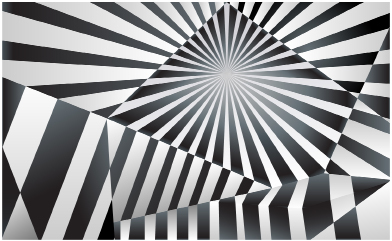Module 5
1. Module 5
1.30. Page 5
Module 5: Angles
Lesson Summary

© Amid/shutterstock
At the turn of the twentieth century, there were movements away from painting pictures, which could, some argued, just as well be taken with a camera. One of those movements was cubism. Cubist paintings were no longer from one perspective. You can find out more about modern art through an Internet or library search.
In this photograph, the abstract background of light and dark incorporates parallel and convergent lines. Can you identify lines and angles formed by transversals? In this lesson you explored the following related question: How are the measures of angles determined in situations involving parallel lines and transversals?
Check your level of understanding of the materials covered in this lesson by completing “Lesson 6 Traffic Lights.” If you select an amber or red traffic light in the multimedia piece, you will receive information about additional work you can complete to improve your understanding of the topics. Complete the suggested work before you proceed to the Lesson 6 Assignment. If you experience difficulty, contact your teacher before starting the Lesson 6 Assignment.
You practised your skills at solving problem situations involving angles arising from the intersection of parallel lines. These problems involved vertically opposite angles, adjacent and supplementary angles, corresponding angles, alternate angles, and co-interior and co-exterior angles. Some of these angles were formed by perpendicular transversals.
 Assignment
Assignment
Retrieve the Lesson 6 Assignment Booklet you saved in your course folder at the start of this lesson. Complete the Assignment. Resave your Assignment Booklet in your course folder and submit a copy to your teacher for assessment.
Unit 3 Project
Take a look back at the Focus section. You saw the parallel lines in the hockey rink with the puck intersecting the lines. Now view the shot in the “Billiard Shot” video clip. Do you see the parallel and perpendicular lines (the cushions) and the angle of the cue ball’s (white ball) path as it bounces?
Do some exploring of your project topic. Can you find parallel lines and transversals? Are they hidden and tricky to see, like in the game of pool, or are they a bit more obvious, as in the hockey example? Sketch and record what you have found, and keep this information to help you with your Unit 3 Project presentation.